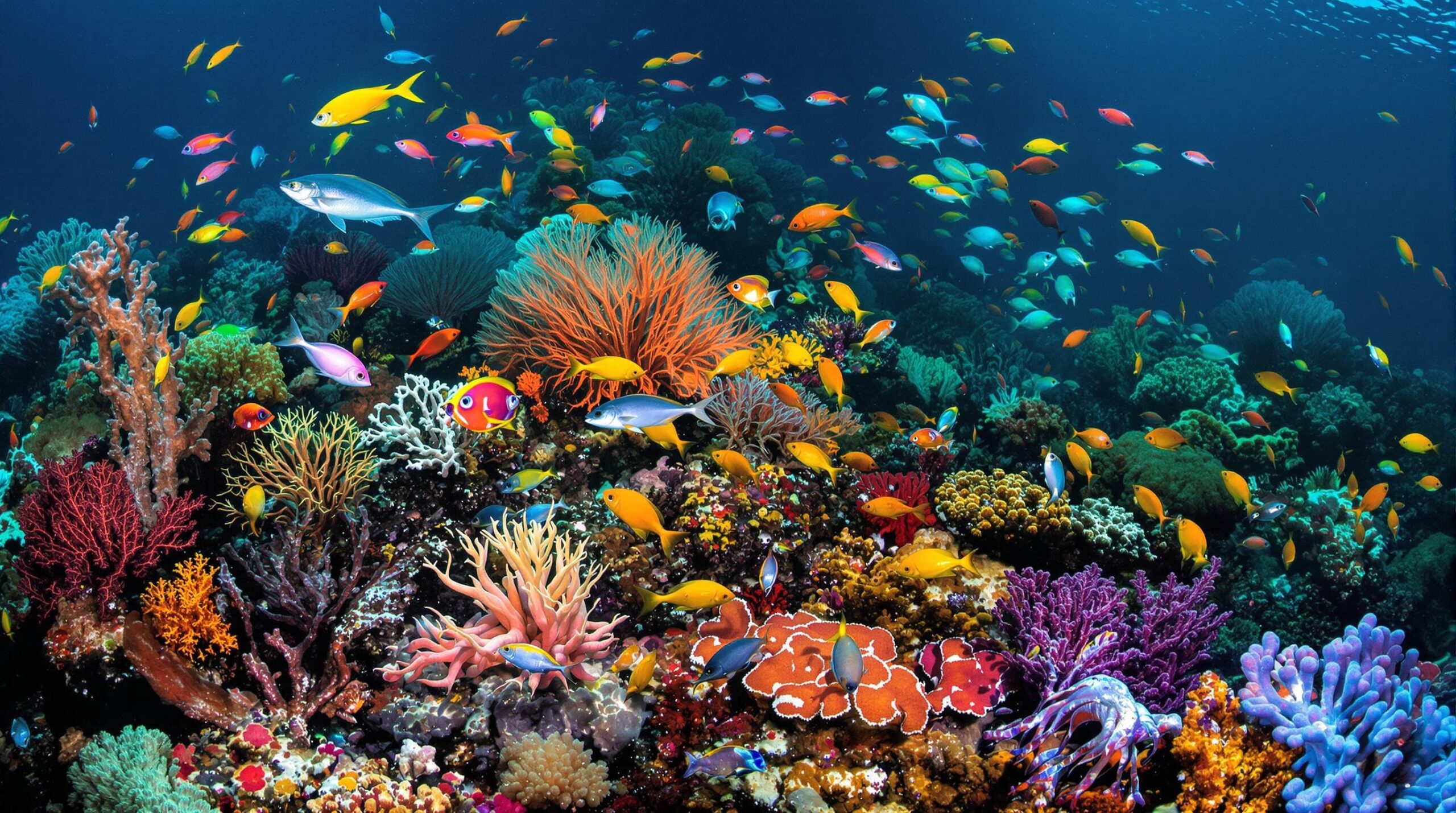Deep-sea ecosystems have always fascinated scientists with their mysteries and extreme conditions. Recent explorations have unveiled astonishing levels of biodiversity in the ocean’s depths. Researchers now realize that these remote environments harbor far more life forms than previously imagined.
The World Beneath the Waves: Exploring Deep-Sea Ecosystems
Deep-sea environments exist at depths greater than 200 meters below the ocean’s surface. These ecosystems face immense pressure, cold temperatures, and total darkness. Despite such challenges, life thrives in these extreme habitats using unique adaptations.
For decades, researchers believed that biodiversity in these locations was relatively low compared to shallower marine areas. Most deep-sea discoveries were limited to a few well-known species like giant squids or certain types of crustaceans. However, technological advances in submersibles and remote-operated vehicles have opened the door to new exploration.
Groundbreaking Discovery by International Team
A collaborative expedition involving the United States, Japan, and several European countries has yielded groundbreaking results. Scientists recently explored an uncharted abyssal plain in the Pacific Ocean using next-generation deep-sea submersibles. These vehicles can reach depths far beyond what older technology could endure.
During this month-long mission, researchers collected hundreds of samples from the ocean floor, hydrothermal vents, and cold seeps. Sample collection involved both sediment cores and high-definition video surveys. This meticulous approach ensured the conservation of delicate organisms and accurate data recording.
The team was astonished by the sheer number of new species encountered during their expedition. More than half of the organisms they observed had never been cataloged before. These ranged from tiny crustaceans to bizarrely shaped worms and bioluminescent invertebrates. This finding has sparked excitement in the global marine biology community.
Unexpected Biodiversity: Findings and Their Significance
The newly discovered species demonstrated an array of survival strategies. Some organisms had developed transparent bodies to avoid predators. Others formed symbiotic relationships with bacteria, using chemical energy from the ocean floor rather than sunlight to survive. These adaptations showcase the incredible resilience of life in extreme environments.
DNA analysis revealed astonishing genetic diversity among the sampled organisms. Many species were only distantly related to their shallow-water relatives. This suggests deep-sea ecosystems have evolved largely in isolation over millions of years. As a result, the deep ocean acts as a vast reservoir of unique genetic heritage.
Bioluminescence proved especially prevalent among the new finds. At such staggering depths, creatures produce their own light to hunt or communicate. Some use flashing signals to deter predators, while others employ subtle glows to attract mates. This discovery adds another fascinating layer to our understanding of deep-sea life.
Some vent communities showcased thriving populations around mineral-rich, hydrothermal fields. These areas support organisms that feed on sulfur compounds released by the vents. Such adaptations present exciting possibilities for biotechnology and the study of life’s origins.
Challenging Old Assumptions and Redefining Ocean Diversity
The extraordinary findings challenge the long-standing notion that deep-sea ecosystems are sparse in life. Instead, they reveal a thriving network of interdependent organisms. These habitats support complex food webs that have persisted for millennia without sunlight.
Previous surveys underestimated both the quantity and variety of deep-water life. Advances in imaging and sampling have transformed deep-sea exploration. As more data emerges, scientists may need to reconsider ecological models of the marine environment.
This discovery also highlights the importance of protecting deep-sea habitats from human interference. Activities such as deep-sea mining and trawling could threaten rare species before their roles are known. By revealing the true richness of these communities, scientists hope to inspire new conservation measures.
Potential Implications for Science and Medicine
Deep-sea organisms have evolved unique metabolic and genetic traits to survive in extreme conditions. These adaptations could have important scientific and medical applications. For example, certain enzymes function at high pressure and low temperature, aiding genetic research and industrial processes.
Researchers also hope to tap into the deep ocean’s potential for pharmaceuticals. Some species produce potent chemicals to deter predators or communicate in the dark. These compounds may lead to novel treatments for infections, inflammation, or even cancer.
The newly discovered microbes offer promising avenues for biotechnology. Their metabolic mechanisms may one day aid in waste degradation, industrial chemistry, or even the discovery of antibiotics. Continued study of these unique life forms could benefit humanity in unexpected ways.
Technology and Collaboration: Keys to Deep-Sea Research
Advancing deep-sea research depends on both innovative technology and global teamwork. Autonomous vehicles now roam the ocean floor for weeks at a time. Sophisticated sensors record temperature, chemical composition, and detailed imagery in real time.
International collaboration ensures the sharing of valuable knowledge and resources. Teams often bring together marine biologists, chemists, geologists, and engineers. This multidisciplinary approach leads to broader insights and more effective research outcomes.
As exploration continues, scientists will likely uncover more surprises in the deep sea. Each new mission adds pieces to the puzzle of our planet’s hidden biosphere. The journey into these unknown depths has just begun, but discoveries already challenge everything previously assumed about life on Earth.
A New Frontier for Exploration and Conservation
Deep-sea ecosystems remain among Earth’s least explored regions. Their newly revealed biodiversity makes them a priority for scientific study and protection. The public now has a rare glimpse into a world rich with strange and beautiful life forms.
Ongoing research will inform policymakers as they consider how best to manage threats like pollution and resource extraction. Insights from these discoveries should guide international agreements aimed at preserving deep marine environments for future generations. Through responsible stewardship, humanity can protect this newly discovered wealth of biodiversity.
Each breakthrough in deep-sea exploration emphasizes the value of curiosity-driven science. The unexpected abundance of life at such inhospitable depths encourages continued research and investment. As scientists uncover more about these extraordinary ecosystems, our appreciation for the deep ocean continues to grow.

